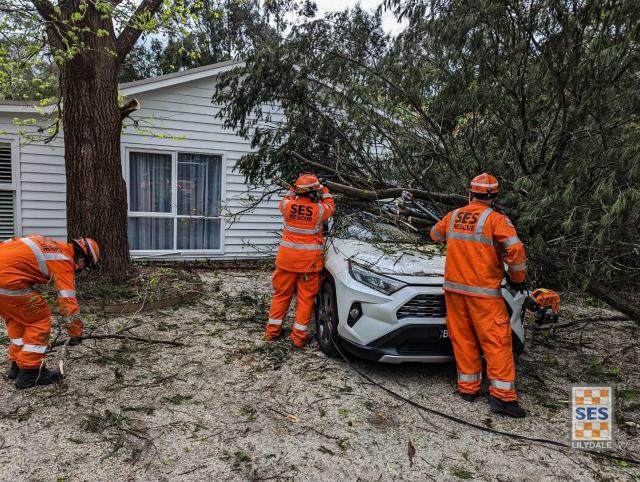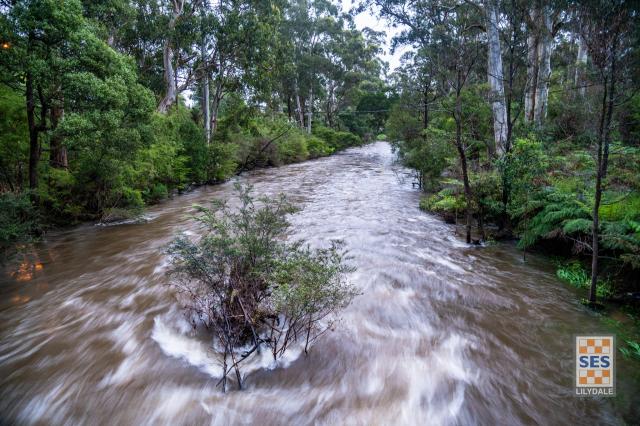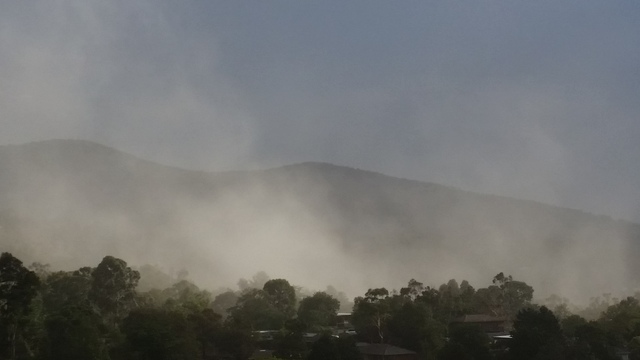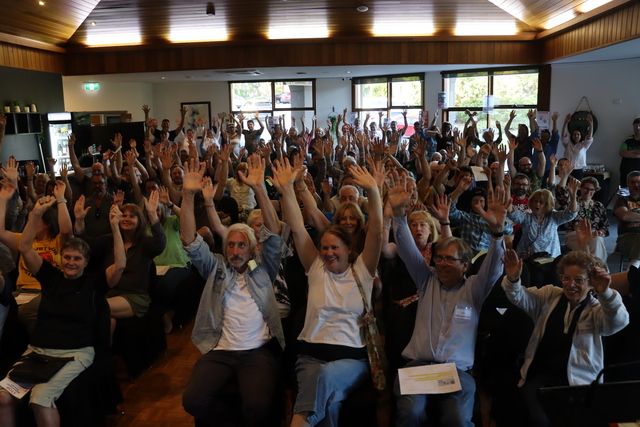A week on from Lilydale’s flash flooding event the SES is still coming to terms with the incredible amount of rain the suburb experienced in such a short period of time.
“We had two hours of rain on Tuesday last week and we had it raining at about 120 mls an hour, that’s a lot of rain,” Lilydale SES unit controller Shaun Caulfield said.
“It probably only did that for about four or five minutes but we had a lot of persistent heavy rain in the 20 or 30 mls an hour and then a few downpours at that heavier rate and that’s when we saw the flash flooding.”
Added to the consistent rain over the last few weeks, the 75 millimetres of rain in 60 mins had nowhere to go other than drains.
“No drainage is going to cope with rain at that level. Combine that with ground that’s already completely soaked and then everything is just going into the drains,” Mr Caulfield said.
“If it’s been dry, the ground will absorb a lot of that before we get flash flooding but in this instance the ground is already sodden so it just ends up running into drains and then across roads and into people’s houses and businesses.”
Mr Caulfield said the rain Lilydale experienced was very isolated in the outer eastern suburbs and the suburb copped the full brunt of the weather event.
With more rain expected for Wednesday and Thursday, Mr Caulfield said there wasn’t much chance of a similar situation occurring again but it’s always difficult to predict.
“We had no real prediction of the rain to the extent that we had on Tuesday last week, we were certainly expecting a storm and we were expecting some heavy rain but not to the extent that we got it.
“We were very isolated as well, the pocket of rain was very much directly over us so it was quite challenging from that perspective but also difficult to predict whether we could have a similar incident that happens over Knox instead of over Lilydale.”
Weather of this kind is what the Bureau of Meteorology predicted for the spring and summer seasons and now it’s just about preparing for the worst, hoping for the best.
“This is the La Nina that everyone’s been talking about. This is what it means. This is a visualisation, this concept of what is La Nina, well it’s what we’ve got now.
“It’s unseasonably heavy rain, it’s not raining because it’s winter, it’s more than that. So it’s why all of our catchments are full, which is great but it also leads to some of the issues we’ve got now.”
Up until 6pm on Monday 31 October, Lilydale SES crew members had assisted Healesville SES in other parts of the Yarra Valley region on 71 requests for assistance, 34 trees down on roads and three trees on parked vehicles.
While the initial response phase is over, crews have still been out assessing properties and structural damage, particularly for people who are unable to do so themselves.
Mr Caulfield said although the SES’s response to something like a flood is similar to how members would respond to an event like last year’s storms, often the damage is done before SES crews can get into a property, so the unit becomes a point of contact for connecting people with the appropriate support services.
Because of the La Nina weather prediction for summer, Mr Caulfield said Lilydale residents should take the time to clean out gutters and drains and notify the council of any blocked drains.
“If you’ve got concerns about drainage, particularly if you live in parts of Mount Evelyn that have culvert and spoon drains, get onto the council to get them cleared. It’s no guarantee that clearing them will stop any issues but it certainly can help it.
“The council can’t be everywhere to do all the preventative maintenance. Sometimes they need to be told that there’s an issue in places.”








